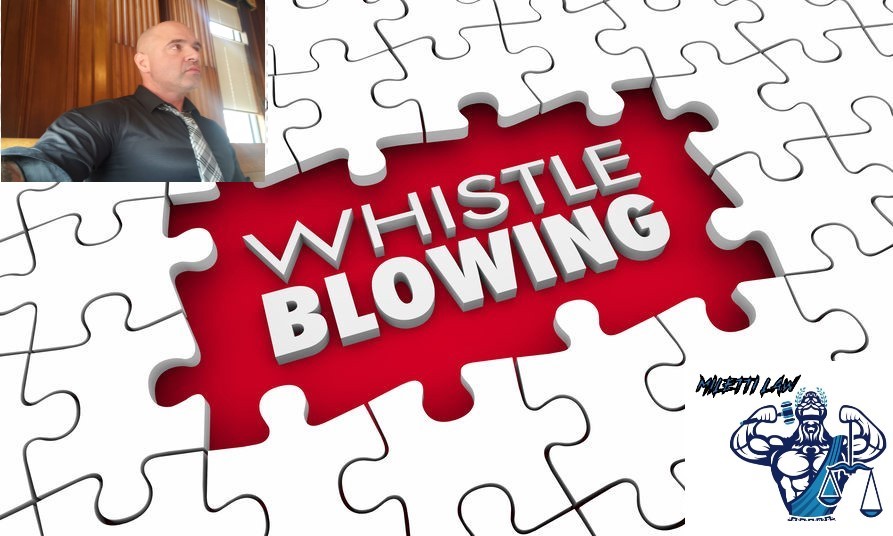As the proud gang of the #UnusuallyMotivated movement, we, here at Miletti Law®, are committed to creating trustworthy & distinctive content that keeps you, our unusually motivated® readers, informed and educated about diverse legal and non-legal issues that affect you or your businesses. As usual, our content is featured as videos that are posted on our YouTube Channel https://www.youtube.com/channel/UCtvUryqkkMAJLwrLu2BBt6w and blogs that are published on our website WWW.MILETTILAW.COM. We highly encourage you to subscribe to the channel and sign up for the Newsletter on the website, which encompasses the best way to ensure that you stay in the loop, and keep riding the wave of knowledge bombs that we drop here!
Over the last two weeks, we have been created content regarding the various federal laws that are applicable to the issues of workplace harassment, discrimination, & retaliation issues in New York. Among other laws, we discussed the Americans with Disabilities Act (ADA) (42 U.S.C. § 12101 et seq) and mentioned that it prohibits most public and private employers from discriminating against employees based on their disabilities. We also added that under the law, covered employers are also obligated to make reasonable accommodations for persons who suffer from a disability, unless the requested accommodation would cause the employers to go through undue hardships. In line with the protections provided under the ADA, we created a 3-part series titled “The Anatomy Of A Disability Discrimination Claim,” which aimed to educate you about the basics and technicalities of making a disability discrimination claim.
Without fear or favor, we are committed to doing justice where it is due. In that regard, we are switching to the reverse gear and, consequently, introducing you to a brand new series, through which we provide you, as the employer, with a checklist of issues that you or your defense counsel should consider when defending against a disability discrimination claim brought forth under the Americans with Disabilities Act of 1990 (ADA) (42 U.S.C. § 12101 et seq.). This blog is Part I of this series and will be updated as soon as possible.
For the purposes of record, the following description and the checklist of issues that follows are necessarily intended for private employers in line with ADA’s provisions.
Application of the ADA
When looking into the application of the ADA, you should evaluate the threshold issue regarding the applicability of the ADA to the employment relationship. The checklist of issues to consider include:
Covered Employers
Here, you should assess whether you are covered by the ADA. The ADA is applicable to specific types of employers including those who (1) have at least 15 employees for each working day in each of 20 or more weeks in the current or preceding calendar year, and (2) engage in interstate commerce.
NOTE: Individual Liability – while it does not permit individual liability for a person who is the sole shareholder or owner of a corporation, the ADA does not provide individual liability for the actions of coworkers and supervisors. However, it is also critical to note that courts may consider an individual sole proprietor as constituting an employer that may be liable under the ADA is such an individual is an owner who does business as a sole proprietor with 15 or more employees.
Employers not Covered by ADA
However, if you belong to the following types of employers, as provided under 42 U.S.C. § 12111(5)(B), then the ADA’s provisions do not apply to you. These types include:
- The United States.
- A corporation wholly owned by the United States.
- Bona fide private membership clubs exempt from taxes -and-
- An Indian tribe.
Covered Employees
Next, you should determine whether the employee who has brought the claim is protected by the ADA. As provided under 42 U.S.C. § 12112(b)(5), the ADA prohibits discrimination against any employee who (1) has a disability, (2) is a qualified individual, and (3) who has the ability to perform a job’s essential functions with or without a reasonable accommodation.
A. What Disabilities are covered by the ADA? The ADA has a pre-defined and covered list of disabilities and, therefore, you should evaluate whether the employee has a disability covered by the ADA. As provided for under 42 U.S.C. § 12102(1), a disability covered by the ADA comprises of the following:
- A physical or mental impairment that has a substantial limitation on one or more major activities of life;
- Being regarded as having such an impairment; and
- A record of having such an impairment.
Who is a qualified individual?
As provided for under 42 U.S.C. § 12111(8), a qualified person applies to an applicant or employee who:
- Can perform the particular job’s essential functions (as opposed to the marginal functions) with or without a reasonable accommodation; and
- Possesses the requisite job-related requirements, training, education, and skill.
What are the essential functions of an employee’s job?
Here, the employer has to determine the essential functions of an employee’s job. As provided for under 29 C.F.R. § 1630.2(n)(2), when determining where or not a job function is considered “essential,” the factors that should be considered include:
- The number of employees available to perform the function;
- Whether the position exists to perform that function; and
- The degree of skill or expertise required to perform the function.
In Part II of this series, we shall move forward the discussion by hammering on the checklist of issues to consider when it comes to the “Statute of Limitations for ADA Claims” & “Defending against Disparate Treatment Claims.” Until then stay tuned for more training, counsel, and guidance. In the interim, if there are any questions or comments, please let us know at the Contact Us page!
Always rising above the bar,
Isaac T.,
Legal Writer & Author.
 Professional Legal & Business Services And Representation - English & Espanol!
Professional Legal & Business Services And Representation - English & Espanol!

 314-648-2586
314-648-2586 CALL US NOW
CALL US NOW








